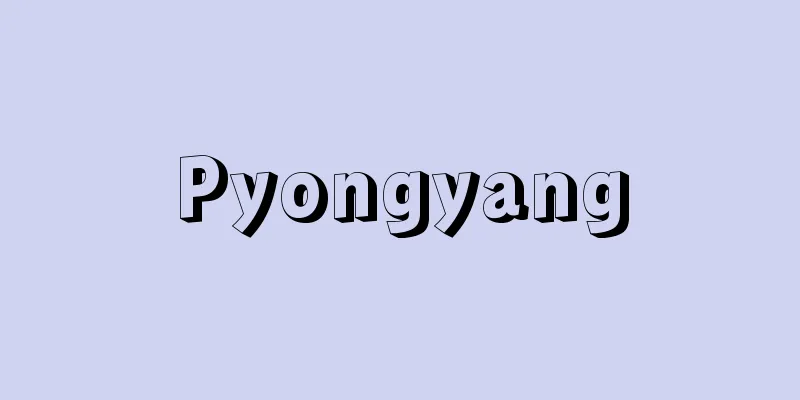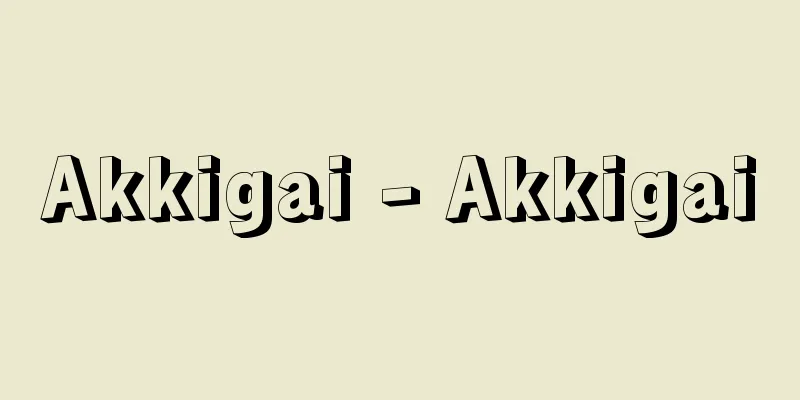Pyongyang

|
The capital of the Democratic People's Republic of Korea (North Korea). Geographically, it is located in South Pyongan Province, but administratively it is a special city. It is composed of 18 districts and 4 counties. It occupies the northern end of the Pyongyang Quasi-Pyongyang Plain, and the Taedong River runs through the city. It is North Korea's No. 1 industrial city, with thriving electrical machinery, construction machinery, precision machinery, spinning machinery, and railroad car industries. There are also factories for textiles, daily necessities, and meat processing. The railroad and road network is well developed, and shipping from the outer port of Nampo and water transportation on the Taedong River are also active. The old city was reduced to ruins during the Korean War, but the city area was expanded in 1960, and the center on the right bank of the Taedong River is the center of national administration and culture, divided into large and small streets, and is home to government offices, political parties, cultural institutions, the birthplace of the late Chairman Kim Il-sung at Mangyongdae, the Juche Tower, Kim Il-sung University, the Children's Palace, Mansudae Art Theater, the Revolutionary Museum, and the Arc de Triomphe. Pyongyang has been an important city in Korea since ancient times, and there is a legend that it was the capital of Dangun and Kija (Kija Joseon). It was the capital of Wiman Joseon, Lelang Commandery, and Goguryeo, and during the Joseon Dynasty it was the second largest city in Korea after Seoul as the Western Capital. There are many ruins in the Pyongyang area, including those from the Paleolithic and Neolithic periods. Pyongyang, the capital of the late Goguryeo period, and the surrounding ruins, including mural tombs, were registered as a World Heritage Site in 2004. The city also has many scenic spots, such as Kumsusan, Morandae, and Eulmildae. Approximately 1,000 km2 . Population: 2,581,076 (2008). → Related topics Democratic People's Republic of Korea Source : Heibonsha Encyclopedia About MyPedia Information |
|
朝鮮民主主義人民共和国(北朝鮮)の首都。地域的には平安南道内にあるが,行政的には特別市。18区域4郡で構成。平壌準平原の北端を占め,市内を大同江が貫流する。北朝鮮第1の工業都市で,電機・建設機械・精密機械・紡績機械・鉄道車両工業などが盛ん。また繊維,日用品,肉類加工などの工場もある。鉄道・道路網が発達し,外港南浦による海運と大同江の水運も盛ん。朝鮮戦争のために旧市街は廃虚と化したが,1960年に市域を拡大し,大同江右岸の中心部は大小の街路によって区画された国家行政,文化の中心地であり,官庁や政党・文化機関,万景台の故金日成主席の生家,主体思想塔,金日成総合大学,学生少年宮,万寿台芸術劇場,革命博物館,凱旋門などがある。平壌は檀君(だんくん),箕子(きし)(箕子朝鮮)が都したという伝説もあり,古くから朝鮮の重要な都市であった。衛氏朝鮮・楽浪郡・高句麗の首都で,李朝時代には西京としてソウルに次ぐ位置を占めた。平壌一帯には遺跡が多く,旧石器時代,新石器時代からのものも残っている。高句麗後期の首都であった平壌と周辺の壁画古墳などの遺跡群は,2004年世界文化遺産に登録された。市内には錦繍山,牡丹台,乙密台など景勝の地も多い。約1000km2。258万1076人(2008)。 →関連項目朝鮮民主主義人民共和国 出典 株式会社平凡社百科事典マイペディアについて 情報 |
Recommend
Kotlyarevskii, I.
...Ukraine became part of Russia in the 17th cent...
Gosekki Dance - Gosechi no Mai
One of the musical and dances used in court cerem...
Rank - Ishi
This is a legal term used in the Nara and Heian pe...
《Les six livres de la république》 (English notation)Lessixlivresdelarepublique
…In “Methodus ad facilem historiarum cognitionem”...
Johannes von Tepl
1350?-1414 A Bohemian (Czech) author of the late M...
Le Rire (English spelling)
… With the rapid advances in printing technology ...
National Vacation Village
This refers to areas where various health and rec...
RE - Ree
《 reverse engineering 》⇒reverse engineering RE [ro...
Vertumnus - Vertumnus
…According to Greek mythology, this was the horn ...
Complementary goods
Goods that complement each other and satisfy desir...
Snow, Edgar Parks
Born July 19, 1905 in Kansas City, Missouri [Died]...
Bamboccianti (English spelling)
A general term for genre painters, mainly from the...
Mkhitar Gosh
1133‐1213 Armenian thinker and codifier. Also know...
Phlegma
...Inflammation is a general term for diseases th...
Ahmad Shawqi (English spelling)
… [Modern and contemporary literature] Modern lit...









![Fujiidera [city] - Fujiidera](/upload/images/67ccb2189ed2c.webp)